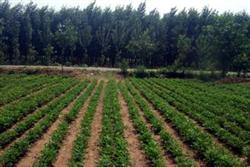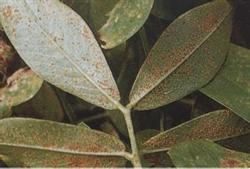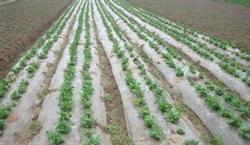Fertilization Technology of Spring Peanut

The amount of sufficient base fertilizer should account for 80% of the total amount of fertilizer. 90%. Some peanut fields only apply base fertilizer, and high yield can be obtained without topdressing in the later stage. Base fertilizer can apply 1000-3000 kg of high-quality ring fertilizer per mu. The application of phosphate fertilizer in peanut needs more phosphate fertilizer than other crops, and the absorption and utilization of phosphate fertilizer is also higher. The experimental results show that the application of 10 kg calcium superphosphate per mu can significantly increase the yield and the after-effect is obvious. When applying phosphate fertilizer in barren land, adding 2.5-5 kg urea per mu as seed fertilizer can give full play to the yield-increasing effect of phosphate fertilizer. However, in the application of seed fertilizer, the fertilizer and seed should be isolated so as not to hurt the seeds and affect their germination and emergence. The application of 10 kg calcium sulfate per mu of calcium fertilizer peanut can not only adjust the soil PH value, improve the nitrogen fixation ability of rhizobium, but also improve nitrogen nutrition, promote pod development, and reduce empty fruit and rotten fruit. Artificial inoculation of peanut rhizobium with bacterial fertilizer can make peanut nodule early and multi-nodule, and improve the nitrogen fixation ability of peanut plant. At present, the peanut rhizobium agent (rhizobium fertilizer) popularized in production generally uses 25 grams per mu. When it is used, it should be mixed with seeds in a paste with an appropriate amount of water, and should be mixed with seeds to prevent sunlight. In addition, it is also necessary to avoid mixing or contact with fungicides.
- Prev

Application of phosphorus Fertilizer to Spring Peanut
After peanut planting in spring this year, there are more Rain Water, more overcast and rainy days, and high humidity in the field, which is conducive to the reproduction of peanut rust. Peanut rust is mainly harmful to leaves, but also to stems, pod stalks and pod shells.
- Next

It is very important to skillfully apply "four fertilizers" to spring peanuts.
The plastic film mulching cultivation of spring peanut has the advantages of heat preservation, moisturizing, fertilizer preservation, improving the soil environment, ensuring that the seedlings are uniform and strong, promoting early maturity and increasing production and income, usually increasing production by 20%, 30%, and net income by 50%, 100 yuan per mu. First, fine soil preparation, full-layer fertilization peanut cover.
Related
- The first cup of black tea in spring, the flavor and history of tea gardens in Kenya, Africa
- The computer can not only choose potatoes, but also grow tea rice. AI will grow winter oolong tea champion.
- It is not only the inflated tea bitten by insects, but also engraved with the four seasons tea in Beipu.
- The Oriental Beauty Tea Festival in Zhuxian County takes the stage at the weekend to experience the plus-size feast of oil tea.
- & quot; Oriental Beauty Tea & Exploration of Emei in Hsinchu, the hometown of quot;
- The new variety of strawberry "Tainong 1" dessert is the first choice with mellow aroma. Crimson gorgeous
- History of Tea in Taiwan: from Wild Inner Mountain to Export Tea Garden
- Two types of Taiwan Oriental Beauty Black Tea won the British three-Star Award for Childhood Tea Xiang Zhang Jiaqi changed from pilot to champion tea maker.
- Banana species and varieties: the planting history of Taiwan Xianren banana and dwarf banana is long, is banana disease resistant?
- Coffee planting Technology: Qianjie Coffee from Seedling to harvesting

